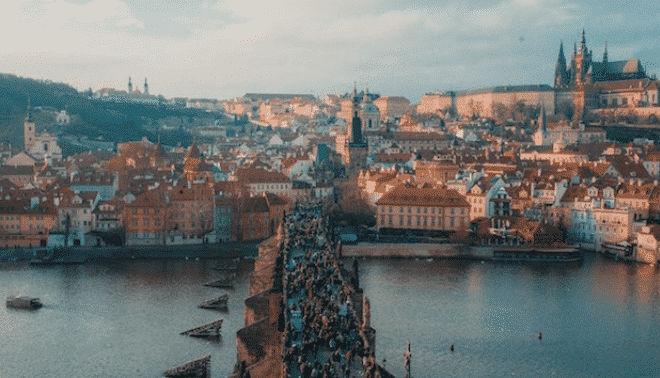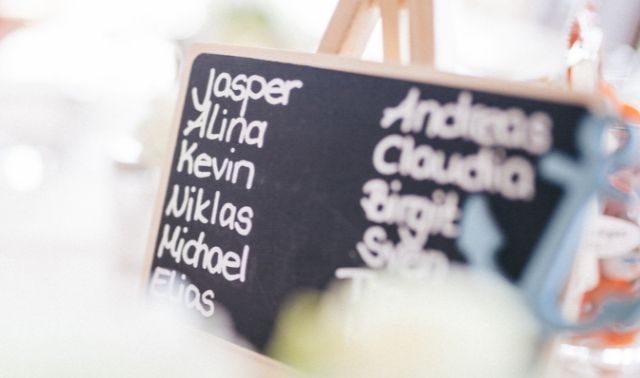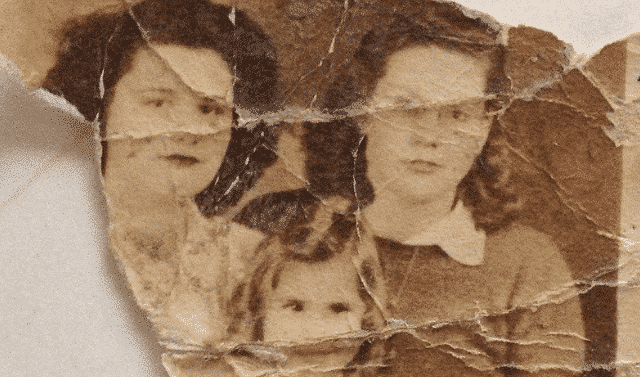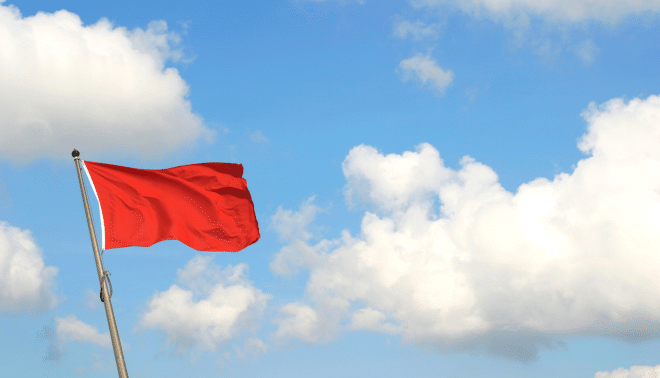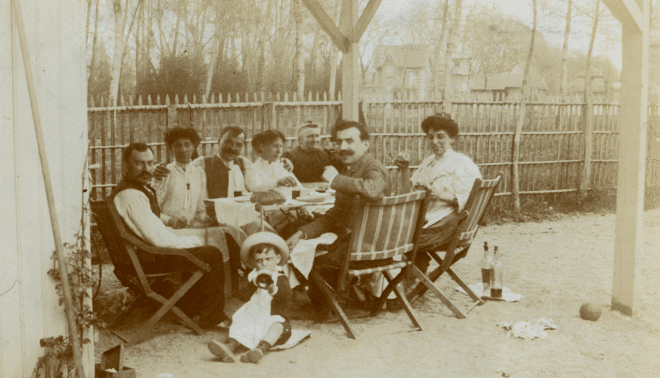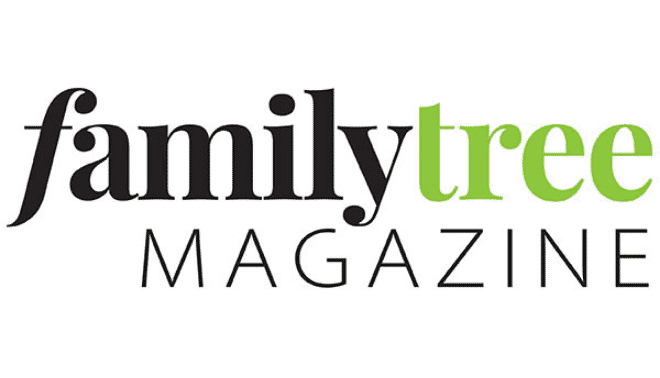
In Family Tree Magazine’s pages, we’ve covered the spectrum of family history, from finding Albanian ancestors to keeping your family reunion from turning into a zoo. As much as genealogy has changed in that span, one constant has been the nuggets of useful information served up in every issue—many of them as helpful today as they were when originally published.
So (in honor of our 15th anniversary in 2015), we’ve gone back and pored over our pages for genealogy tips that stand the test of time. We’ve skipped advice on websites and software that might be dated, concentrating instead on tips that genealogists might still find handy 15 years from now. Here—in 15 (of course) categories—are some of our all-time favorite tips.
Beating Brick Walls
1. Can’t find your ancestor’s Social Security record? Until 1951, the system didn’t cover the self-employed, temporary government workers, farm laborers, domestic workers such as maids, workers in US territories, or overseas employees of American companies. Railroad workers were covered separately under the Railroad Retirement Board (the first three digits of their Social Security numbers range from 707 to 728).
2. Even if you live far from your ancestors’ town, consider joining the area’s genealogical society. Members probably know where to find all kinds of local records. What you need may even be in the group’s library.
3. If you’re floundering in your search for a female ancestor, don’t rule out the possibility of multiple marriages and burial markers. If she was a widow, perhaps she was living with her children in the year you can’t find her in the census, or maybe she’s recorded under her maiden name.
4. You may be too close to a research brick wall to view it objectively. Trade problems with a friend, and try to find her missing information while she tries to find yours. This brings a fresh look to a frustrating situation, and it’s fun to help someone else.
5. Collect information about siblings in each generation. Knowledge of brothers and sisters is important, especially as you study immigrant ancestors of pre-20th-century generations. Siblings sometimes moved in groups and witnessed legal documents for each other.
6. Cross-reference city directories with the census. Be sure to check directories for the year before, the year of and the year after the census to see if your ancestors moved during this time. Keep in mind that information you find in a 1910 directory was compiled the previous year, 1909—before the 1910 census came calling.
7. To avoid the pitfall of merging two or more same-named people into one, assume that at least two people of the same name lived in a given town. Land and tax records are important documents for sorting out people of the same name: No two people owned the same property, nor would they be taxed on the same possessions.
8. Charting what you know about a problem ancestor through the years, by making a chronology, can help solve your research puzzle. Start with the earliest date you have for a person and then list everything you know about him or her and the immediate family. Include your speculations, but make these clear by highlighting them or adding a question mark.
9. Plugging historical events into an ancestor’s personal timeline helps you see his or her life in a broader context. When you compare general history with family history, you may discover that a gap in an ancestor’s life story was filled by a trek westward in search of gold. You may uncover a connection between the flu epidemic in 1918 and the deaths of family members that year.
10. When you’re at your wits’ end, try these measures: Organize and re-examine your records, write a research report on the steps you’ve taken and records you’ve found, or focus on another branch for awhile.
Uncovering American Ancestors
11. The inaccuracy of early maps and land grants often created land disputes in New England’s Colonial era. At one time, Connecticut and Massachusetts both claimed part of Rhode Island, so records from the southern part of that state can be found in all three states. Most New England states had similar boundary disputes with their neighbors.
12. The settlement pattern of the South can help you trace your family’s migrations. Think of it like genealogy: The Carolinas settled Georgia and (with considerable aid from Virginia) Tennessee. The other states of the lower South were the “children” and “grandchildren” of the Carolinas, Georgia and Tennessee.
13. You’ll find deeds in county courthouses, except in New England states, where they’re typically in town halls. Clerks generally recorded these in ledger books, including an index of each volume. Note that the books contain duplicate deeds—the original deeds went to the landowners.
14. Beware of boundary changes and other historical twists in tracing your Southwest ancestors. For example, the Nevada counties of Carson, Humboldt and St. Mary’s were enumerated with Utah Territory in 1860. In New Mexico, the 1860 US census covered only the area south of the Gila River. In Arizona, the original 1864 territory was divvied up into four counties.
15. Stumped? Try hitting the big city. For example, if your family was in the Midwest during the 1800s and you can’t find them, look in Chicago. Many of our ancestors were drawn to cities for jobs, to be near relatives or the train station, or simply to sight-see.
16. Your ancestors may have gone someplace else to get married (or unmarried). Think of the hordes of couples attracted to Nevada to elope or divorce. So many Californians crossed the border for this purpose, the California State Archives maintains microfiche records of Nevada marriages and divorces. Washington residents often get married in Idaho, which offers lower fees and less paperwork for marriage licenses. Cross state lines to break down your brick walls, and check neighboring counties where ancestors may have gone.
17. Family historians often assume freed slaves took the surname of their most recent slaveholder. But the surname might have belonged to a prior slaveholder (the first, the favorite or the longest), or the slaveholder of a parent or guardian, or it may have another source.
18. Veterans’ pension records may hold clues to your African-American ancestors: More than 250,000 slaves and free blacks fought for the Union in the Civil War. Applicants were required to prove their identity, so you’ll find their date and place of birth, as well as marriage records and names of parents and children.
19. Typically, larger plantations kept meticulous records regarding expenses for slaves’ clothing or medical care. Slaveholders’ manuscript collections of account books, business and personal papers can prove valuable resources. Check the manuscript collections of city, county or state historical or genealogical societies, state archives, and public or university libraries.
20. Have you come across acronyms such as AF&AM or FAAM, or a compass and square symbol in your research? You probably have a Freemason in the family. If your relative’s lodge still has records from his lifetime, you may be able to get his application. Keep two things in mind: First, a man could petition a lodge for membership after he turned 21, but he usually didn’t do so until he was in his 30s. And prior to 1900, the application probably won’t include parents’ names.
Finding Canadian Ancestors
21. Each Canadian province has its own archives, separate from the Library and Archives Canada. Generally, you’ll find vital, tax and certain land records among their holdings. Many provincial archives also have regional locations—Quebec, for example, has nine—so check to see which one holds the materials you need.
22. Early Canadian soldiers served for the French and British governments, so if you don’t find answers in provincial archives, getting military service records can mean re-crossing the ocean. Good places to start are the national archives in England and France.
23. When looking for records on your French-Canadian ancestors, you’ll need to check dit names associated with your family names in addition to the standard surnames. A dit name could relate to a physical characteristic, place of origin, father’s name, mother’s family name, military service or anything else. The University of Montreal research program in historical demography PRDH has an online database of surnames and associated dit names found in pre-1800s documents.
Solving Immigration Puzzles
24. To find your immigrant ancestor’s passenger record, you’ll need to know his original name—not necessarily the one found in US records. Many immigrants Americanized their names after arriving in the United States, translating given names to their American counterparts or using a similar-sounding name. (Contrary to popular myth, Ellis Island official didn’t change immigrants’ names.)
25. Church archives might help you find early passenger records. Immigrants often arrived with introductory documents used to join a church in America. The Episcopal Church called these letters of transfer; the Congregational Church, dismissions; Quakers, certificates of removal. Lutherans also used similar documents.
26. If you can’t locate your ancestors in US passenger lists, try looking north. Immigrants often found it easier and less expensive to sail to Canada and travel overland to the United States. In fact, by the 1890s, steamship companies advertised passage to Canada as a way to avoid the US government’s rigorous immigration inspections.
27. If you struck out looking for immigrant ancestors in both Ellis Island and Castle Garden passenger records, ask yourself: Are you looking in the right port? Perhaps your ancestors actually sailed through Baltimore, Boston, Philadelphia or another city. The National Archives has microfilmed passenger lists from dozens of ports, and many ports’ lists are searchable on Ancestry.com and FamilySearch.
28. You might find that Castle Garden passenger lists don’t provide enough information to ensure you have the correct ancestor. It’s a big help to know the names of others who traveled with the person you’re after, especially when you’re looking for a common name. Try to narrow the possible matches to a manageable number and study the passengers listed above and below each candidate. Then search for those names along with your ancestor in other types of records.
29. Your immigrant ancestors had to register for the draft regardless of their citizenship, and draft records may tell you where they came from. For 19th and early 20th century immigrants, check Civil War and WWI draft records. During the Civil War, the Union drafted only aliens who’d declared their intention to naturalize. The records show these foreign-born draftees’ country of birth.
30. Looking for immigration records before the US required passenger lists in 1820? Check the shipping news section of old newspapers: Articles in papers of ports such as New York, Boston and Philadelphia often reported arrivals with names of first- and second-class passengers. Also try compiled sources such as the Germans to America series and the Passenger and Immigration Lists Index, 1500-1900, both searchable on Ancestry.com.
Tracing British Isle Branches
31. Even though the 1841 and 1851 Irish censuses were destroyed in 1922 during the Irish Civil War, there may be a way to access the information. During the 1910s, Irish clerks used censuses to prove age on old-age pension applications. They searched census returns and recorded what they found on pension forms. The original pension forms are at the National Archives of Ireland and the Public Record Office of Northern Ireland.
32. Regardless of your Irish ancestors’ faith, don’t overlook Church of Ireland records. Roman Catholics and nonconformists often were buried in Church of Ireland cemeteries. If a Catholic or Presbyterian family had real estate, members of the family might’ve had a Church of Ireland marriage ceremony to make the union legal and preserve their property rights.
33. Remember that England switched from the Julian to the Gregorian calendar in 1752, omitting 11 days from September. So the day after Sept. 2, 1752, was Sept. 14. The first day of the year changed from March 25 to the familiar Jan. 1.
34. Scottish first names typically follow a traditional pattern, though this isn’t a hard-and-fast rule: The first son is named for the father’s father; the second son, for the mother’s father; the third son, for the father; the fourth son, for the father’s brother; the first daughter, for the mother’s mother; the second daughter, for the father’s mother; the third daughter, for the mother; and the fourth daughter, for the mother’s sister.
Discovering Eastern European and Jewish Ancestors
35. Hungarians commonly put their family names before their given names, the reverse of most Western cultures. And a woman often won’t appear in records by her own name, but by adding the suffix –né to her husband’s name.
36. Like immigrants from many ethnic groups, Czechs and Slovaks followed a pattern of chain migration. Immigrants often set out for America to join relatives or old country neighbors who were already there. For that reason, you should take note of the church, immigration and tax records of your ancestors’ US neighbors. The families might have a connection back home.
37. Look for records from the Ukrainian church or synagogue your ancestors attended. Unlike other records in which Eastern European names could get mangled, religious records from an ethnically Ukrainian place of worship often include proper spellings of names—the clerk was usually able to understand and correctly record them. These records also often contain specific geographic information, including the correct spelling of the town or village name.
38. Polish children often were named after a saint whose feast day was near the child’s birth or baptismal date. If the feast date theory doesn’t provide clues, check the baptismal certificate. Sometimes children were named after their godparents.
39. In Jewish families, given names offer clues to past generations—sometimes more so than surnames. Ashkenazim generally name children after recently deceased relatives, so you can try to estimate relatives’ years of death by matching infants to ancestors. Sephardim might name offspring after the living as well as the dead.
40. To find a Jewish ancestor’s town of origin, look to the person’s final resting place and local synagogue. Jewish immigrants often formed landmanshaftn societies based on their hometowns. Members frequently bought lots in cemeteries, so if your ancestor was buried in a society-owned plot, he likely came from the town the society represented.
Researching Western European Roots
41. A large volume of military records from Austria’s empire helps make up for hard-to-access church records. FamilySearch’s Family History Library (FHL) has thousands of rolls of microfilm of these records, because most men owed at least some military service. The records cover men from the area that’s now part of Austria, but not other parts of the Empire. A location index at the FHL can help you find which regiments were recruited where.
42. Check the FHL for notarial records about your French ancestors. Notaries recorded legal events such as marriage contracts, wills, property divisions, guardianships and household inventories. These are the oldest type of records kept in France.
43. If your Norwegian ancestor’s last name doesn’t follow the usual pattern of ending in -son or -sen, that may be a clue. When Norwegians began adopting permanent surnames to replace the patronymic system of taking the father’s first name, many used the name of their town or farm.
44. Swedish church records use the birth date as a sort of identifier—helpful when a parish has a dozen Anders Jonssons—and the last two digits of the birth year usually are written larger. So you can quickly find your ancestor, born in 1859, by looking for names with a big 59. Remember that Swedes flip-flop month and year compared to US usage, so 1859/10/3 is March 10, 1859.
45. Find your Danish ancestors’ emigration records with the help of the police. The Copenhagen police recorded everyone emigrating from Denmark—not just from Copenhagen—between 1868 and 1940. To protect people from unscrupulous emigration agents, the police had oversight of all overseas tickets. Complete information from each emigrant’s ticket included name, last residence, age, year of emigration and initial destination abroad. Most of these records are online in the free Danish emigration archives.
46. Spanish naming traditions, also followed in Latin America, make it easier to find women’s maiden names. Women kept their maiden names when they married. Children took on both the father’s and mother’s surnames, in that order, using the father’s as a family name. In Portuguese tradition, the second surname is the family name.
47. For middle initials, Greek children of both sexes took the first letter of their father’s given name. Upon marriage, a Greek woman would usually change her middle initial to the first letter of her husband’s name. When requesting records or asking for information from Greek repositories, it’s best to leave a middle initial as is and not spell out the name.
48. When scrutinizing Italian records, keep in mind that dates are European-style: 4/6/1887 is June 4, 1887. You may find September, October, November and December shortened as 7mber, 8mber, 9mber and Xmber, respectively. This is because in the ancient calendar, September was the seventh month of the year, October the eighth month, and so on.
49. Look for German immigrants’ origins in published lists of emigrants (Auswanderungen) from particular areas, compiled form German records. Examples include Even More Palatine Families: 18th Century Immigrants to the American Colonies and Their German, Swiss, and Austrian Origins, 3 vols., by Henry Z. Jones Jr. and Lewis Bunker Rohrbach (Picton Press) and Westerwald to America: Some 18th Century German Immigrants by Annette Kunselman Burgert and Henry Z. Jones Jr. (Picton Press).
50. Good sources for immigrants’ places of origin include obituaries, naturalizations and passport records (especially later ones). Also check church baptismal records for the immigrants’ children.
51. When researching your ancestors in their home countries, you’re likely to encounter websites and records in foreign languages. Become familiar with translation tools such as Google Translate and arm yourself with translations of genealogy words, such as those available in the FamilySearch Wiki.
DNA Testing Tips
52. If you can get the cooperation of a person or people to whom you suspect you’re related, a Y-DNA (if you can find male-line descendants to test) or autosomal DNA test can help you determine whether a relationship exists. Joining a Y-DNA surname study, which tests individuals with the same or similar surname to find relationships, also is a good way to make connections.
53. Can’t find any male relatives who inherited your maternal grandfather’s Y-DNA? Cast your net wider by climbing further up your family tree. See if that grandfather had brothers who had sons, or if his father (your great-grandfather) had brothers who had sons.
54. To wrap your head around the numbers when you get your DNA testing results and keep potential relatives in order, create a spreadsheet for your results. Set up a column for each marker and enter values for that marker. As potential matches find you through the testing company’s database, it’ll be easy to enter their results on the same markers and compare them to yours.
55. Before deciding on a DNA test, clarify the research problem you’re trying to solve. This will help you choose the right DNA test and make sure you have the correct person (or people) tested.
Investigating Military Mysteries
56. Because legislation wasn’t passed until 1871 to grant pensions to War of 1812 veterans and their survivors, your ancestor may have died before filing for pension benefits. Widows obtained most pensions. In addition, one condition of receiving a War of 1812 pension was that the applicant had not supported the Confederacy during the Civil War.
57. Check the 1910 census for clues to your ancestor’s Civil War service. It asked whether a person was a veteran of the Union Army (abbreviated UA) or Navy (UN), or the Confederate Army (CA) or Navy (CN). The 1865 New York and 1885 Wisconsin state censuses also identify Union veterans. State censuses of Confederate veterans include Alabama in 1907, 1921 and 1927; Arkansas in 1911; and Louisiana in 1911.
58. Congress didn’t authorize pensions for Mexican War veterans until 1887, but these application files have a few genealogical goodies. Each applicant had to supply his wife’s maiden name, the names of any former wives and related death or divorce dates, and names and birth dates of living children.
59. If your ancestors’ military records were destroyed by the 1973 fire at the National Archives’ National Personnel Records Center in St. Louis, you may have success with alternate records. The National Archives has 19 million final pay vouchers providing veterans’ names, service numbers, dates of service and character of service; as well as a database of army enlistments for World War II. WWI and WWII draft records are searchable on Ancestry.com and FamilySearch, and available at the National Archives. The archives also has burial case files on people who died while in the military for 1915 to 1939.
Discovering American Indian Heritage
60. It’s important to learn the history of the Indian tribe you think an ancestor belongs to. Many tribes were partially or completely removed to new locations, sometimes more than once. Realize, too, the tribes the federal government formally recognizes today may be one of several communities descended from a tribe, so you want to learn how your ancestor’s tribe merged with or split from others over the years.
61. It’s unlikely DNA testing would link you to a specific Indian tribe, a recent time period, or any one individual. Genetic genealogy tests are best used as a clue for further research into Indian ancestry.
62. The government first included “Indian” as a race category in the 1870 US census. Before then, censuses counted only American Indians who lived among the general population, not those on reservations, and usually didn’t identify them as such. The most significant federal censuses for American Indian research are 1900 and 1910, which include separate Indian schedules.
Organizing Your Search
63. If your genealogy software program has fields to record both baptism and christening information, use christening if the ceremony was performed soon after birth. Use baptism if it occurred later in life. If birth information is missing, many programs display christening information on-screen and in printed reports. They’ll display burial information if death dates are lacking.
64. Make computer filenames meaningful. It’s easy to save a records request letter as Jonesletter.doc, but later, you’ll have to open it to know what it’s about. Instead, call that request for Peter Michael Jones’s birth certificate pmjones-bcrequest-091311.doc.
65. Coordinate your records filing system with the couples on your pedigree chart. Start by making a family group sheet for every couple. Then create a file folder for each couple. Label the folder with the names of the couple, using the wife’s maiden name. When a child marries, begin a new file folder for that marriage.
66. When you get too many records to file them strictly by surname, try filing them by surname plus record type. Label your files following these examples: Turner Census, Turner Land Records and so forth. Arrange these folders alphabetically by surname and then by type of record.
67. Keep track of your search in a research log, using a spreadsheet or the templates at Family Tree Shop. Note records you want to check, the associated ancestor’s name, the repository or website where it’s located, the date you search it, what (if anything) you find, and a source citation.
68. Keep lists of all the ways your family surnames might be pronounced and spelled so you can look for all the variations and indexes and records as you research. Don’t ignore something just because the name is spelled differently from what you expect.
Finding Clues in Old Photographs
69. Designate a mystery photo folder (whether in digital or paper files) for your nameless family photos. Once you’ve made headway on an identification, you can move the photo to the suspected subject’s folder. Attach a copy of each mystery shot to a worksheet listing everything you’ve learned about the picture.
70. Examine every facet of clothing in a photo from head to toe. Elements of a person’s dress can date an image and reveal place of origin. Browsing clothing history books for attire similar to that in your photo may result in a match.
71. If you don’t own a picture of your family homestead, contact the local historical society. Its collections may include photos of the street where your ancestors lived. Track down the neighbors’ descendants, who may have images showing part of your grandparents’ house.
72. Men’s clothing in photographs is harder to date than women’s, because men’s styles varied little during the 19th century. The best clues are in hats, vests and shirts, which changed the most over time.
73. In the 19th and early 20th centuries, photographers could order cards preprinted with their name and address. They would then mount their customers’ photographs on these cards. A photographer’s imprint accompanying a photo can give you a shortcut to determining a time frame the image was taken: Search consecutive years’ city directories for the area where the photographer lived to learn the studio’s dates of operation.
74. Bring old photographs with you when you visit relatives to conduct oral history interviews, and ask your interview subject to show you his or her photo collection. Not only will the pictures generate conversation, but you also may get help identifying mystery people. Use a mobile scanner and your smartphone or digital camera with a tripod to digitize your relative’s photos on the spot.
Preserving Family Memories
75. Handle old photos only at the edges or don white cotton gloves before working with them. Clean them carefully with a soft, dry brush—don’t use water or solvents, and don’t attempt to repair a torn or flaking photo yourself.
76. Store your family archive in archival-quality cardboard boxes up off the floor and away from water pipes. Avoid places where temperature and humidity fluctuates, such as attics, basements and garages.
77. Depending on the type of photo you have, label it on the back in one of two ways: A soft lead pencil, such as a graphite sketching pencil, is best for labeling paper photos. Label contemporary photos printed on resin-coated paper with a pen that is waterproof, fade resistant, permanent, odorless when dry, and quick drying. Black ink is preferable because colored inks tend to fade over time. Either way, write with light pressure to avoid making indentations.
78. To preserve paper documents, keep them unfolded in an archival folder or large envelopes made of Mylar or acid- and lignin-free paper. Store those in a flat file manuscript box. Always scan original documents and transcribe them to preserve the data. Make copies on acid-free paper for sharing and handling; store those as you would the originals. Storing extra copies with other people also is a good backup.
79. To preserve your family’s old cookbooks and recipe cards, use a cookbook stand with a clear shield to protect against spills and splatters. Scan the cards and keep the originals in an archival-quality scrapbook or acid-free file box. Remove paper clips and rubber bands—both deteriorate over time.
Researching at Repositories
80. Need ideas for records to consult? Run a search of the FamilySearch online catalog for your ancestors’ county or town, then browse the record categories to see what’s available.
81. Although National Archives regional facilities’ holdings extend only to federal entities within that archives’ boundaries, the records’ contents sometimes cover the entire country. For example, the Southeast region in Atlanta has all WWI draft registrations because the last federal agency to administer those records was in that region. Likewise, the Southwest region has extensive records of American Indians, because Oklahoma (where many tribes were relocated) falls into its territory.
82. Don’t overlook libraries (local, university and historical society) and state archives as genealogy resources, especially when you feel like you’ve found everything you can on genealogy websites. Study library websites and search their online catalogs and indexes to get a feel for their genealogy collections.
83. Many overseas archives post research request instructions and fees on their websites. When making a request, follow the instructions exactly and be as specific as possible. Be brief and ask for records related to only one ancestral line at a time. Give dates European-style—day, month, year.
84. Searching library catalogs for family history books mentioning your family? A basic search is fine for rare names. But for common last names, try searching on a surname plus the word family. If that still produces too many hits, add a keyword such as a place.
85. County histories may mention many families in an area—too many for all to be in a library catalog description. Check the books’ indexes and tables of contents for the places your ancestors lived to see if your relatives might be mentioned.
86. You’ll get the most from a trip to the FHL in Salt Lake City if you identify in advance which materials you want to use (especially those that you can’t readily access from home), and formulate a plan to make the most of your time. Check the FamilySearch online catalog several weeks before your trip to be sure the microfilms you need are actually at the library: Some are kept off site, and you’ll need to request delivery to the FHL. Print the catalog entries of the records you want to use. Once there, you can bypass rechecking the catalog and go straight to searching for ancestors.
Tracking Sources and Resources
87. Stumped trying to find your ancestors’ birth records? Try these other sources of birth information: the 1900 US census (provides the birth month and year); death certificates; family Bibles, letters and diaries; military pension and service files; naturalization records; passports; school, hospital and other institutional records; Social Security applications; and tombstones (beware, though: Inscriptions are sometimes incorrect).
88. Among the sources that can help you reconstruct and study your ancestors’ cluster of friends and associates are ancestral county tax, land, probate, marriage, vital and court records. For example, some tax records were compiled alphabetically, but others give clues to neighborhoods and thus, neighbors. Tax records may show a person who paid taxes for another as his agent; such an agent was often a relative or close friend. Many marriage records give the names of witnesses or sureties, often relatives of the bride or groom.
89. Newspapers are great sources of detail about ancestors’ lives. Digitized collections on sites such as GenealogyBank, Newspapers.com and Chronicling America make finding articles easy. In addition to searching for ancestors’ names, try their addresses, military units, and names of their employers, schools and social organizations.
90. Apprenticeship records are valuable for genealogy because they had to be signed by the apprentice’s parent or guardian. Most apprentices were teenage boys, and they were obligated to work at their trade until age 21. The length of an apprenticeship can be used to estimate an apprenticed ancestors’ age, by subtracting the number of years from 21.
91. Funeral and memorial cards may fill in the blanks where obituaries are missing. Early cards were 4×6 inches and included the deceased’s birth and death dates, the funeral home name and possibly address, a Bible verse and funerary symbolism.
92. People born before the advent of official vital records often would obtain a delayed birth certificate to get Social Security benefits, passports or pensions. Delayed birth certificates may not be subject to the same stringent privacy rules as regular birth certificates, and thus may be easier to get.
93. Use online family trees for clues to point your research in one direction or another, but remember that no official person verifies the trees’ are correct. Such trees are notorious for their inaccuracies, so do research before adding the names, dates and relationships to your own tree.
94. Many court records lack indexes, so compiled abstracts often are the best way to find mentions of an ancestor. Search the FamilySearch catalog by place, then scour subject headings for court records and other legal proceedings.
95. To help avoid slow responses to courthouse inquiries, don’t send requests around election time. Before and after elections, clerks are busy and requests tend to pile up.
96. You might find your Catholic ancestors named in a parish history booklet, often published on a 50- or 100-year parish anniversary. Look for these at parish offices, local historical societies, or diocesan or Catholic university archives.
97. Don’t overlook the special nonpopulation schedules created along with some censuses. The special schedules include individuals’ names and information not found in most other records. For example, agricultural census schedules report specifics about the farmer’s crop production, and mortality schedules give cause of death.
98. It took months for early census enumerators to visit households. To keep things consistent, an official census day was established for each enumeration (see a list). All ages and household members’ names were to be recorded as of that date. Of course, enumerators occasionally deviated from this directive. But in general, a child born after the census day won’t be recorded in that census, even if he was 2 months old by the time the census taker made it to his house.
99. School districts took periodic censuses to predict enrollment and determine how many teachers to hire, books to buy and buildings to construct. Some states mandated these enumerations. The headcounts generally include children’s names and ages, addresses, parents’ names and sometimes more. These records can be hard to pin down, but start looking for them in the FHL online catalog and in state archives.
100. Many Midwestern states took state censuses, the majority of them for years ending in 5. The Iowa state census gives a county for those born in Iowa, and the maiden name of the enumerated person’s mother. Michigan’s 1894 state census tells how many children each woman had and how many were living. It also tells how many years a person resided in Michigan and in the United States.
101. After locating an ancestral cemetery, you’ll want to visit it. The best time of year to make a field trip to the cemetery is early spring. The weeds shouldn’t be overgrown yet, and the winter rain and snow may have cleaned the tombstones.
A version of this article appeared in the January/February 2015 Family Tree Magazine.



